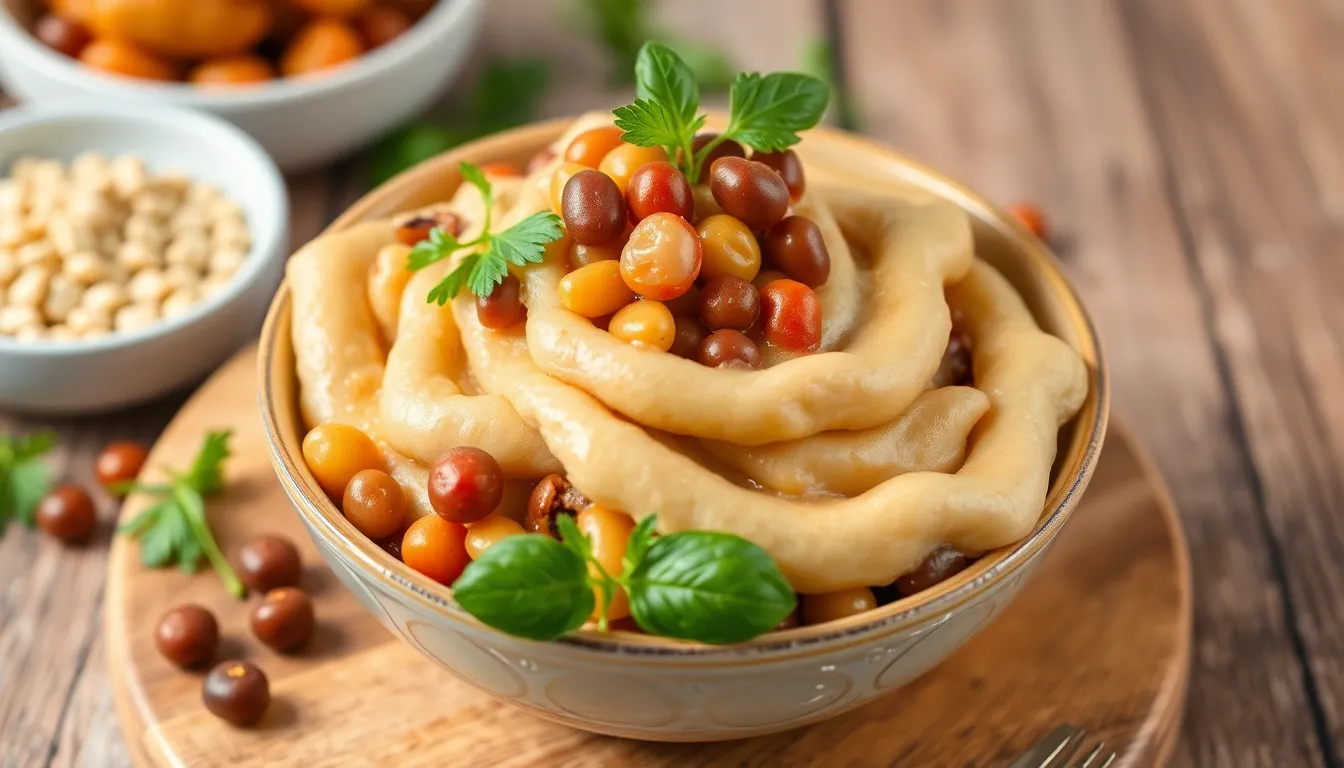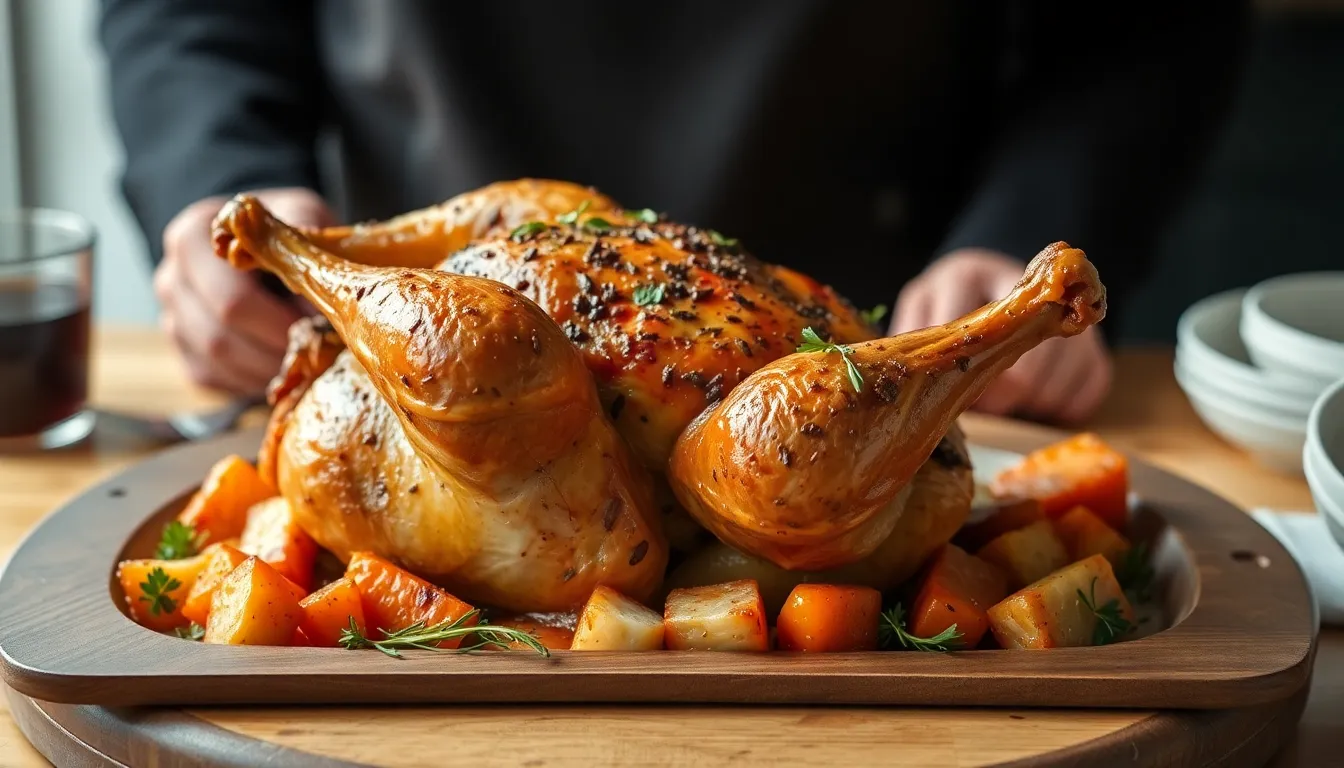How to Use Legumes in Baking: Tips and Tricks
Introduction
Baking with legumes may seem unconventional, but it can transform the way you think about desserts and breads. Legumes are nutrient-dense foods that offer a plethora of health benefits, including high protein and fiber content. For those on vegan or gluten-free diets, legumes serve as an excellent alternative to traditional baking ingredients, enhancing both nutrition and flavor.
In this post, we will explore the various types of legumes, how to prepare them for baking, ways to substitute them in recipes, and share some delicious recipes that feature legumes prominently. Whether you are a seasoned baker or a novice, you’ll find valuable insights to incorporate legumes into your baking routine.
Section 1: Understanding Legumes
Legumes are a family of plants that produce seeds in pods. They are rich in protein, fiber, vitamins, and minerals, making them a staple in many diets worldwide. Common legumes used in baking include:
- Chickpeas
- Lentils
- Black beans
- Peas
Nutritional Benefits of Each Type
Here is a brief overview of the nutritional benefits of each legume:
| Legume | Protein (g) | Fiber (g) | Calories |
|---|---|---|---|
| Chickpeas | 15 | 12 | 164 |
| Lentils | 18 | 15 | 230 |
| Black Beans | 15 | 15 | 227 |
| Peas | 8 | 8 | 62 |
Incorporating these legumes into your baking can significantly boost the nutritional profile of your creations.
Section 2: Preparing Legumes for Baking
Preparation is key when it comes to using legumes in baking. Properly cooked legumes not only enhance flavor but also ensure the right texture in your baked goods. Here’s how to prepare them:
How to Cook Dried Legumes
When using dried legumes, you typically need to soak and cook them before using them in recipes. Here’s a quick guide:
- Soaking Methods:
- Overnight Soak: Cover legumes with water and let them soak overnight. This softens them and reduces cooking time.
- Quick Soak: Boil legumes for 2 minutes, then let them sit for 1 hour before cooking.
- Cooking Tips:
- Pressure Cooker: Cook soaked legumes for about 10-15 minutes, depending on the type.
- Stovetop: Simmer soaked legumes in water for 30-60 minutes until tender.
Using Canned Legumes
Canned legumes are a convenient option. Here’s how to prepare them:
- Always rinse canned legumes under cold water to remove excess sodium.
- Drain well to avoid adding too much moisture to your batter or dough.
Pureeing Legumes for Baking
Pureeing legumes can help achieve a smooth and creamy texture in your baked goods. Aim for a consistency similar to that of mashed bananas or applesauce. A food processor or blender works well for this purpose.
Section 3: Substituting Legumes in Recipes
When incorporating legumes into baking, the key lies in understanding substitution ratios. Here are some guidelines:
- For every cup of mashed legumes, you can generally substitute it for one cup of flour or fat in a recipe.
- Start by replacing a small portion of the flour or fat and gradually increase it as you become more comfortable with the flavors and textures.
Examples of Traditional Recipes That Can Be Adapted
Here are some examples of traditional recipes that can be easily adapted using legumes:
- Brownies: Substitute black bean puree for half the fat.
- Muffins: Use mashed chickpeas or lentils instead of eggs for added moisture and protein.
- Bread: Replace a portion of the flour with lentil flour for enhanced texture and nutrition.
Tips for Balancing Flavors When Adding Legumes
When using legumes, balancing flavors is crucial. Here are some tips:
- Add spices and extracts like vanilla, cocoa powder, or cinnamon to mask any earthy flavors.
- Use sweeteners like honey or maple syrup to enhance the overall sweetness of your baked goods.
Section 4: Recipes Featuring Legumes
Now that you have the knowledge to use legumes in baking, let’s dive into some specific recipes that highlight their versatility:
Chickpea Chocolate Chip Cookies
Ingredients:
- 1 cup chickpeas, cooked and mashed
- 1/2 cup peanut butter or almond butter
- 1/3 cup honey or maple syrup
- 1 tsp vanilla extract
- 1/2 tsp baking soda
- 1/2 cup chocolate chips
Method:
- Preheat your oven to 350°F (175°C) and line a baking sheet with parchment paper.
- In a bowl, mix the mashed chickpeas, nut butter, honey, vanilla, and baking soda until well combined.
- Fold in the chocolate chips.
- Drop spoonfuls of the dough onto the prepared baking sheet and flatten slightly.
- Bake for 10-12 minutes or until the edges are golden. Let cool before serving.
Lentil Banana Bread
Ingredients:
- 1 cup cooked lentils, pureed
- 2 ripe bananas, mashed
- 1/3 cup honey or maple syrup
- 1 tsp baking soda
- 1/2 tsp salt
- 1 tsp cinnamon
- 1 1/2 cups flour (or gluten-free flour)
Method:
- Preheat your oven to 350°F (175°C) and grease a loaf pan.
- In a large bowl, mix the pureed lentils, mashed bananas, honey, baking soda, salt, and cinnamon.
- Gradually add the flour and mix until just combined.
- Pour the mixture into the prepared loaf pan and bake for 50-60 minutes or until a toothpick comes out clean.
Black Bean Brownies
Ingredients:
- 1 can black beans, drained and rinsed
- 2 large eggs
- 1/2 cup cocoa powder
- 1/2 cup honey or maple syrup
- 1/4 cup coconut oil, melted
- 1/2 tsp baking powder
- 1/2 cup chocolate chips
Method:
- Preheat your oven to 350°F (175°C) and line an 8×8 inch baking pan with parchment paper.
- In a blender, combine black beans, eggs, cocoa powder, honey, coconut oil, and baking powder until smooth.
- Fold in the chocolate chips.
- Pour the batter into the prepared baking pan and smooth the top.
- Bake for 20-25 minutes or until a toothpick inserted in the center comes out clean.
Section 5: Common Mistakes and How to Avoid Them
Even the most experienced bakers can make mistakes, especially when experimenting with new ingredients. Here are common pitfalls to watch out for:
- Overcooking Legumes: Overcooked legumes can lead to a mushy texture in your baked goods. Be sure to cook them just until tender.
- Not Balancing Flavors: If the earthiness of legumes is too pronounced, it can overpower your baked goods. Use spices and sweeteners wisely to balance flavors.
- Inconsistent Texture: If your legume puree is too thick or too thin, it can affect the overall outcome. Aim for a creamy texture and adjust with water or additional legumes as needed.
Conclusion
Using legumes in baking is not only innovative but also a healthy choice that packs a nutritional punch. The versatility of legumes allows you to experiment with flavors and textures, making your baked goods unique and delicious. Don’t hesitate to try different legumes and recipes; you may discover new favorites!
So gather your ingredients, unleash your creativity, and enjoy the wonderful world of baking with legumes!




